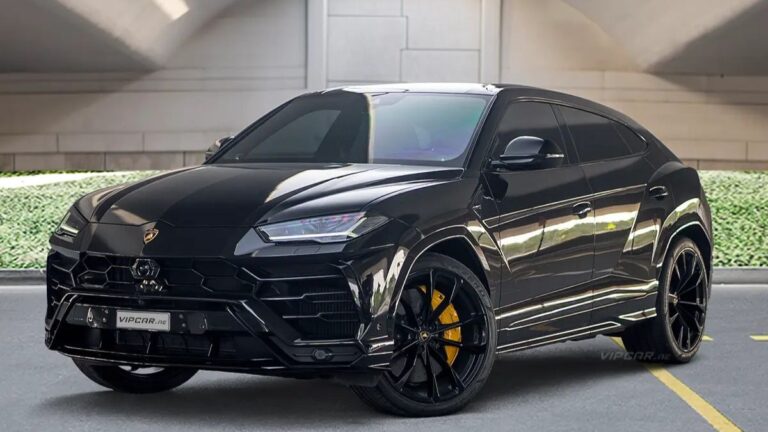What if the road could talk to your car? You’re cruising down Sheikh Zayed Road in a Lamborghini Urus rental Dubai sun blazing, skyline gleaming, music up just right. Everything clicks. Then, traffic ahead starts to slow. But before you notice, your car shifts you into the faster lane. A few miles later, it eases off the gas—ice ahead. No alerts. No drama. It just… knows.
It sounds like science fiction, but it’s already happening. Thanks to 5G, connected highways, and smart city tech working quietly in the background, driving is changing fast.
We’re entering a new era—where roads don’t just get you from A to B, they help you get there, smoothly and safely.
So, What Makes a Highway “Connected”?
It’s not as futuristic as it sounds. At its core, it’s a real-time conversation between your car and the road.
This is called vehicle-to-infrastructure communication, or V2I. Instead of relying on maps or instincts, your car receives direct updates from the road itself. No guesswork. No lag.
Here’s how it works: built-in sensors and cameras collect data—like traffic jams, weather conditions, or construction. That data travels via 5G and lands in your vehicle’s system. The car adjusts accordingly. It might change lanes, slow down, or give you a heads-up—without waiting for you to react.
You’re still the driver—but now your car’s got an extra layer of awareness.
Why 5G Makes the Difference
For this to work, speed matters. Milliseconds matter. And that’s where 5G steps in. Compared to older networks, 5G is built for real-time updates. If there’s debris on the road or a light about to change, your car knows instantly and acts just as fast.
And it’s not just speed. 5G can handle tons of data from thousands of sources at once. Think rush hour: cars, signs, sensors, traffic lights—all feeding info into the system. 4G might struggle. 5G handles it without breaking a sweat.
Smart Cities Are Already On It
Connected highways don’t exist in a vacuum. They’re part of a bigger shift that starts in the city.
You’ve probably already seen it. Traffic signals that adjust based on flow. Parking apps that actually help. Tolls that change with demand. It’s all part of smarter infrastructure—and it’s scaling fast.
And it’s not just urban streets. Highways are getting smarter too, transforming into coordinated, data-driven routes.
In Dubai, for instance, businesses are already adapting. Some of the VIP Rent A Car now offer vehicles equipped to sync with this infrastructure, giving drivers a taste of futuristic mobility without needing to own the tech themselves.
Look at Seoul: cars there already talk to the road via 5G. In the U.S., Michigan and Nevada are testing “smart corridors” packed with sensors, weather monitors, and even lanes for self-driving vehicles. This isn’t a concept sketch—it’s happening now.
Where Do Self-Driving Cars Fit In?
Autonomous vehicles are the next layer. They already use onboard tools like radar and cameras. But when they connect to road data, they become even sharper.
Imagine your car getting a heads-up from a traffic light about to turn red—or a warning about a stalled car hidden around a curve. That kind of real-time visibility takes safety and efficiency up a notch.
These cars can reroute instantly, save fuel, and travel in tight formations—or “platoons”—to reduce drag. And while all that’s happening, you’re just sitting back, enjoying the view… maybe even learning a fun fact about the valley you’re passing through.
So, What Does This Mean for Your Next Road Trip?
Picture this: a car that already knows the traffic, the weather, and your usual coffee stop. It adjusts as you drive. No checking your phone. No second-guessing directions.
No missed exits. No wrong turns. Just a ride that runs itself—quietly and efficiently.
Whether you’re heading across town or escaping to the mountains, the experience feels easier. Smarter. Better.
What’s Still Holding Things Back?
We’re close—but not quite there yet. This kind of system needs time, coordination, and investment. Not every city is ready to roll out 5G or retrofit roads with smart tech.
Then there’s the question of data. Real-time sharing is powerful—but without strong protections, it’s risky.
And while the tech exists, systems still need to speak the same digital language. Automakers and city planners are still working that out.
Still, momentum’s building. Tech firms, governments, and automakers are teaming up. Pilot projects are running. And piece by piece, the future is coming together.
The Road Ahead
Connected highways aren’t an idea anymore—they’re real, and they’re already shaping how we move.
With 5G and V2I leading the way, the road is more than pavement. It’s a smart partner. It reacts. It adapts. It helps.
For some, that means a quicker drive to work. For others, a stress-free road trip that practically plans itself.
How do you imagine the future of driving? Share your vision in the comments—we’d love to hear it.

